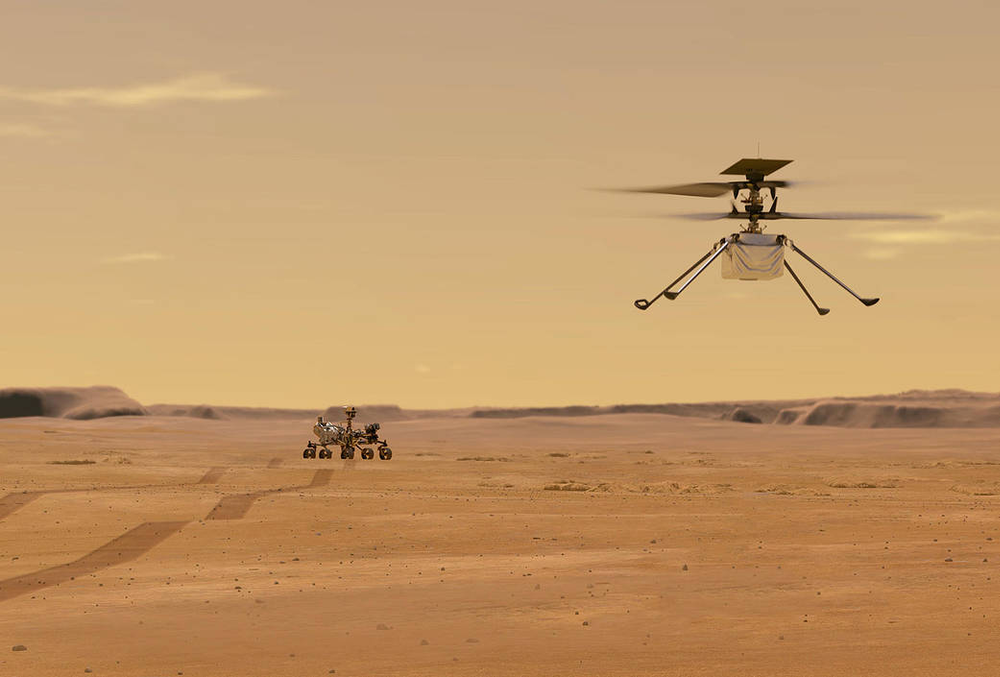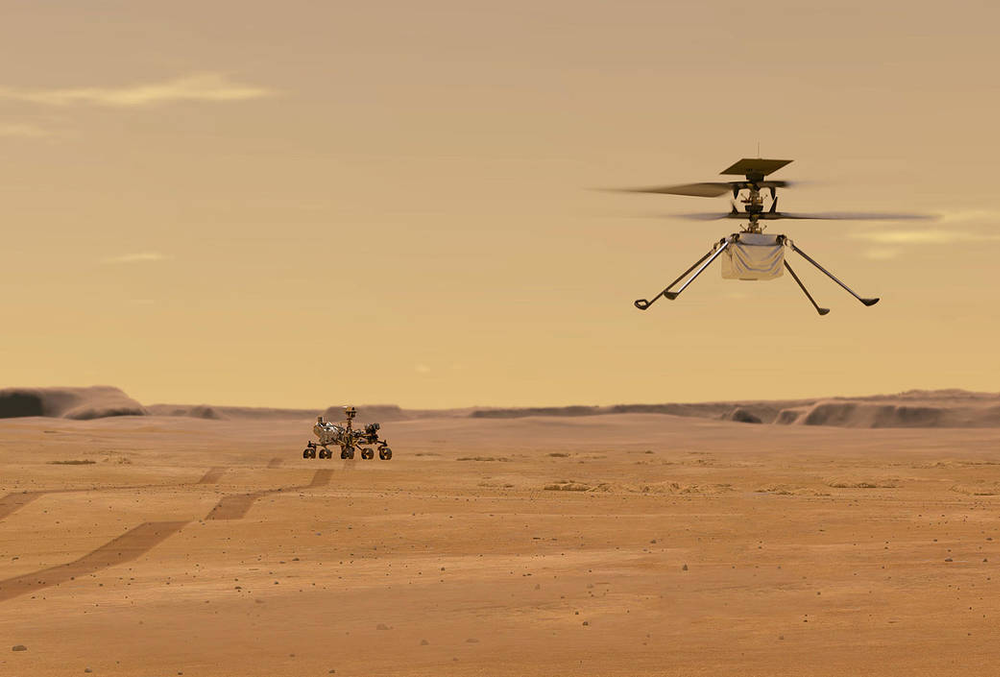Sound-Intensity Variations on Mars
In a planetary atmosphere, the propagation of sound varies in complicated ways. On Earth, the influence of turbulence, convection, and other sources of variation has been extensively explored. Sound propagation on Mars, however, has been a mystery—until now. During a Martian-year-long campaign, NASA’s Perseverance rover and its small robot companion, the Ingenuity helicopter, gathered enough acoustic data for researchers to characterize how the attenuation of sound near Mars’ surface changes depending on the time of day and the season [1]. The success of models in accounting for these data raises confidence in the use of acoustic sensors to probe sound propagation on Venus, Titan, and on other bodies with substantial atmospheres.
Mars’ atmosphere is composed of 95% carbon dioxide and is 100 times as thin as Earth’s. Like Earth’s, it is subjected to strong diurnal fluctuations near the surface. Sunlight warms the Martian surface, setting up convective instabilities that models predict should lead to daily and seasonal fluctuations in how sound attenuates.
Baptiste Chide of Los Alamos National Laboratory, New Mexico, and his collaborators analyzed data collected over the mission’s first 657 Martian days, or sols (one sol lasts 24.03 hours and there are 669 sols in a Martian year). The team studied recordings of two sounds that were collected by a microphone that is part of Perseverance’s SuperCam instrument suite. One sound was generated by the laser-induced breakdown spectroscopy system (LIBS), another of SuperCam’s devices; the other was made by the Ingenuity helicopter.
The LIBS shoots laser pulses at rocks up to 8.8 m away, vaporizing the rocks’ surfaces. The vaporization is so explosive that it emits a sonic boom that contains sound waves with frequencies of 2 kHz and higher. The Ingenuity helicopter has two pairs of counterrotating blades whose detectable hum contains frequencies of 84 Hz and 168 Hz. The team found the expected diurnal fluctuations in sound intensity in recordings of the laser-induced sonic shock waves. Early in a Martian day, before the Sun warms the surface to initiate convection, the data indicate a tight distribution of the shock waves’ amplitudes. That distribution widens as the surface warms. The distribution also widens with distance to the zapped rock, as expected, and shifts in amplitude. Some shock waves arrive with higher amplitudes than predicted by turbulence alone. Chide and his collaborators interpret the shift as arising from a mirage-like effect where heat-induced variations in the refractive index of the air divert sound toward the microphone.
Temperature and pressure affected the efficiency with which acoustic energy transferred from the vaporized rock to the atmosphere and from the atmosphere to the microphone. When the researchers plotted a Martian year’s worth of boom amplitudes, they found a smooth seasonal variation, with the amplitudes in winter being 1.8 times higher than in summer.
The length of Ingenuity’s flights varied considerably, enabling the team to perform detailed measurements of the attenuation of sounds made by the helicopter’s twin rotors. The attenuation at 84 kHz and 168 Hz as well as at the much higher frequencies of the shock waves fit a model developed in in the 2000s. Indeed, all the dependencies the researchers found fit to models developed over the past 30 years.
Team member Andi Petculescu of Louisiana State University at Lafayette points out that while the pressure ranges of Mars’ atmosphere can be reproduced in a lab, local conditions on the planet vary so much that “there’s not a single magic equation” for sound propagation. To fully characterize sound propagation and to infer local conditions, he says that measurements must be made in tandem with more detailed attenuation models.
–Charles Day
Charles Day is a Senior Editor for Physics Magazine.
References
- B. Chide et al., “Measurements of sound propagation in Mars’ lower atmosphere,” Earth Planet. Sci. Lett. 615, 118200 (2023).





